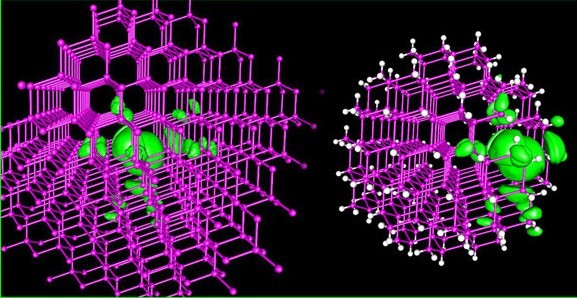What are your views about Quantum Dots?
London, UK - 2nd August 2009, 19:26 GMT
Dear ATCA Open & Philanthropia Friends
[Please note that the views presented by individual contributors are not necessarily representative of the views of ATCA, which is neutral. ATCA conducts collective Socratic dialogue on global opportunities and threats.]
Per distinguished ATCA members’ feedback, you would like to find out how Quantum Technology is being enabled. Short answer: Quantum Dots!

Quantum Dots are the way in which some of the Quantum Technology components are being realised. In case you missed our Twitter MicroBlogs here are the highlights on this Socratic dialogue, which is presently underway:
Quantum Dots are tiny nano-crystals consisting of a few hundred to a few thousand atoms. They sparkle with promise for uses ranging from providing cheap solar energy to tagging proteins in living cells to enabling quantum computers. The optics and electronics of these semiconductor nanocrystals are dramatically different from the same materials in bulk. http://ow.ly/iPWF
Quantum Dots have the potential and economies of scale to produce low cost solar cells with high efficiency. Solar cell and semiconductor companies are pioneering new nanophotonics technology, which creates quantum dot nanoparticles (about 50 millionth of a centi-metre) that when exposed to light create electrical current. One useful feature of quantum dots is that the colours of light they absorb and emit can be tuned simply by varying their size. This is because dots of the same material but different sizes have different band gaps, which absorb and emit different frequencies of light. Quantum dots are a valuable commodity: tiny semiconducting crystals with potential for applications such as bioimaging, colour displays and lasers. Cadmium selenide dots absorb high-energy photons of ultraviolet and re-emit visible light photons. Different sizes of dots glow different colours right through the spectrum from red to blue as the crystals get smaller. http://ow.ly/iPXy
Quantum Dot covered Light Emitting Diode (QD LED) bulbs are already available for around $40 to $100! However, a conventional bulb can be bought for less than $1. Where is the difference? Power Consumption and Durability as measured on the basis of Lifetime. The power consumption of the QD LEDs is extremely low (20% or less of conventional bulbs) and durability is much higher (Lifetime = 14,000+ hours). over 10 years of nightly lighting (say in a living room) the difference in running cost between on old incandescent bulb and one of the new QD LED lights is about $400 (at 30cents/kWh).
[ENDS]

Are you missing our regular ATCA updates? Please note that we have shifted our emphasis to Twitter, Facebook and LinkedIn's because they are much more real-time and significantly more responsive to changing global dynamics and volatilities in a 24/7 interconnected world.
We welcome your thoughts, observations and views. To reflect further on this subject and others, please respond within Twitter, Facebook and LinkedIn's ATCA Open and related discussion platform of HQR. Should you wish to connect directly with real time Twitter feeds, please click as appropriate:
. ATCA Open
. @G140
. mi2g Intelligence Unit
. Open HQR
. DK Matai
Best wishes

